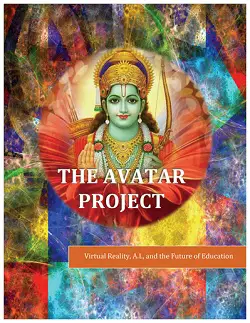|
TRANSLATE THIS ARTICLE
Integral World: Exploring Theories of Everything
An independent forum for a critical discussion of the integral philosophy of Ken Wilber
 Andrea Diem-Lane is a tenured Professor of Philosophy at Mt. San Antonio College, where she has been teaching since 1991. Professor Diem has published several scholarly books and articles, including The Gnostic Mystery and When Gods Decay. She is married to Dr. David Lane, with whom she has two children, Shaun-Michael and Kelly-Joseph. Andrea Diem-Lane is a tenured Professor of Philosophy at Mt. San Antonio College, where she has been teaching since 1991. Professor Diem has published several scholarly books and articles, including The Gnostic Mystery and When Gods Decay. She is married to Dr. David Lane, with whom she has two children, Shaun-Michael and Kelly-Joseph.
An Excerpt from Professor Andrea Dime-Lane's newest short book,
The Avatar Project: Virtual Reality, A.I. and the Future of Education Available from Amazon.com. THE A.I. PROFESSORArtificial Intelligence and the Classroom of the FutureAndrea Diem-Lane
Today in light of Google and Wikipedia and YouTube, classroom education seems arcane and mostly a waste of time.
The promise of technology transforming education has a long history, dating back to the origins of writing up through the Gutenberg revolution (of movable type) to the advent of electricity and air conditioning to visual overheads. My husband David ruefully recalls how some educators believed that televisions in the classroom would dramatically improve learning. They even brought in black and white televisions (with screens less than 25 inches) into the classroom and showed live lectures in science and other subjects. The problem is that it didn't work and within months were aborted for the older methods of rote memorization, lectures, group work, etc. In the 1990s, when the Internet became more publicly accessible, particularly with Tim Berner's brilliant application, the World Wide Web, schools finally seemed on the brink of a genuine revolution. By the 2000s online courses became ubiquitous and at my own school, Mt. San Antonio College, more popular than regular meet in person classes. However, as any online professor can tell you, the online courses have significant drop out rates and one wonders how much students really benefit from such a process. It is one of those curious (and depressing) ironies that today we have access to more information than any generation in human history. We are quite literally surrounded by a cloud of books, articles, films, and other digital forms of knowledge. Yet, given this overwhelming abundance, most of it goes untapped, particularly by those who would benefit most from it. For example, the vast majority of young men and women today spend upwards of 8 to 12 hours a day in front a digital device (scanning here and there--from Instagram to Snapchat to YouTube to Facebook to whatever new app that has gone viral) but when asked how much "in-depth" reading they do (such as reading a whole book or diving into a longer, technical piece of writing), the answer is “less than 30 minutes.” A recent study said that we look at our smart phones on average a 150 times a day, a disruptive activity that nobody did a decade ago. We have become surface surfers who have developed the inordinate habit of "skimming" along the topography of knowledge. Today in light of Google and Wikipedia and YouTube, classroom education seems arcane and mostly a waste of time, since most of what is taught can be learned much quicker and much cheaper by simply using one's smart phone or one's laptop. Although each of us now have access to a quasi Alexandrian library many times over, we tend to use it only trivially particularly in school where the overriding motivation isn't learning, per se, but securing higher grades so as to graduate and move on to something more profitable. It may well be that making knowledge acquisition a requirement almost invariably turns learning into a chore and not a joyful pursuit. Given this institutional structure, it is little surprise that education has not changed much over the years since the student lacks genuine motivation. Can this be changed? Perhaps not, but I do see some encouraging signs that may turn the tide. The one breakthrough that seems on the brink of transforming education in general and school in particular is the exponential evolution of artificial intelligence. What a student needs (but seldom if ever gets) is a mentor who can be a constant companion and goad, encouraging and motivating him or her according to their respective abilities and needs. In other words, an intellectual coach intimately connected to the student and his/her rate of progress. Imagine having a friend who kept track of your learning and who in turn offered help at each and every turn with new and innovative ways to understand difficult material. To give one simple but telling illustration: My husband David was on the football team in fifth grade and was an average player, assigned the duties of being a center to the quarterback. However, he was having difficulties knowing how to snap the ball to the quarterback when he was in the shotgun position, since he had small hands and couldn't get the football to spiral just right. The coach of the team was too busy to properly instruct him, as there were 30 other players demanding his attention. This is where David's older brother Joseph came in and became instrumental. Each day after school, Joseph took the time and energy to teach David how to hike the ball in a professional manner, better than anyone in elementary school. Joseph was relentless and took care to follow David's progress day to day. It made all the difference and allowed David to excel in football for the next several years. This may seem like a silly example at first, but if something similar could happen in school, it would be transformative. The real problem in today's elementary schools is that it is a factory model attempting to serve too many people without enough attention given to individual growth and differing learning needs. This is precisely where artificially intelligent agents or coaches or guides could be revolutionary, since it could adapt and schedule itself around the particular needs and limitations of the pupil. Today a student invariably is motivated to study because his/her grade is predicated upon how well they can perform on a test (usually multiple choice and usually done on a Scantron like paper, where one fills in the appropriate small circles with a number 2 pencil). The student takes the test after so many weeks and it is a make or break situation which tends to produce increased anxiety and a desire not so much to learn as to remember and do well for a short burst of time. This sprint-like process may leave the student stressed and after the ordeal is finished forgetting or neglecting what he or she struggled so hard to remember. However, there is a much more powerful alternative to this compress and stress methodology. Make a game out of taking tests. For instance, right now there is an app called QuizUp that can be downloaded for free on almost any computational device. It “is a multi-player game in which one user competes against another during seven rounds of timed multiple-choice questions of various topics.” This past year my husband and I developed our own variation for use on QuizUp focusing on general science and philosophy questions. It is called Neuralsurfer Philosophy. [It can be accessed here directly by going to quizup.com and searching for “neuralsurfer philosophy”] 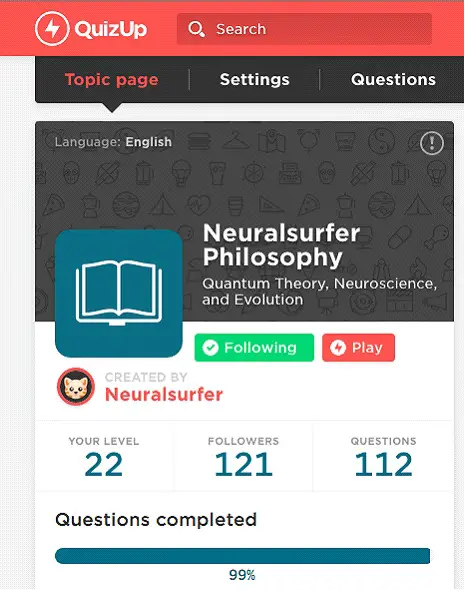 We beta tested it with 112 questions in a multiple-choice format, including questions that also include picture captions. Usually first-time players don't do very well since they may not be familiar with the topic, but after playing the game a number of times, the questions start to repeat themselves and the player begins to recall which answers were the correct ones so that over time one becomes more and more proficient. Because it allows one to compete with others around the world or with an android bot (if no one is available at that moment), it has a dynamic and live feel to it. One is free to play the game as many times as possible and become adept relative to their learning curve. Play the games enough times and you can master it but without the inherent stress in school testing systems. 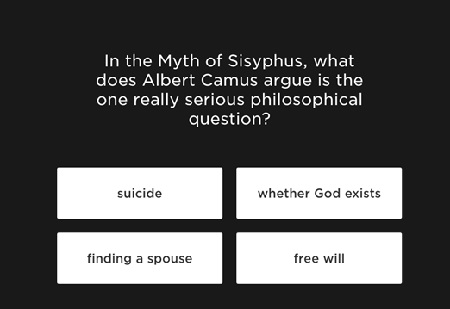 The institution of a school or an academy was predicated upon knowledge being exceptional and thus by necessity involved commitment and allocation of precious resources in specialized libraries and laboratories. Thus becoming an expert in a field meant first being accepted as an apprentice under a specialized master teacher who had access to a plethora of books and manuscripts that the student didn't. It was for this reason that potential forms of knowledge were concentrated and bounded in certain regions. Such an oral and literary concentration, of course, became better known as colleges, libraries, museums, etc. This geographical displacement (and the varying discrepancies that arose from those having more or less resources) led to a hierarchical structure in education which, in turn, stratified who would learn what, where, and when. We see this today in the different reputations amongst higher schools of learning. One can almost "feel" the difference in perception when one claims to have graduated from Harvard, for instance, versus claiming to have secured a degree from California State University, Dominguez Hills. The latter pupil may have actually learned more than the former, but the valuable resources of Harvard and its attendant prestige are far greater than its California State University counterpart. This discrepancy can also be economically quantified by looking at the base salary of a newly minted Stanford Law graduate in comparison to a graduate of Abraham Lincoln University in southern California, even if both potential attorneys passed the California Bar Examination during their first attempt. The hierarchy of knowledge acquisition has served for centuries as a social barometer, either allowing more upward mobility or closing off corridors of power reserved for the intellectual elite. The oft used cliché that knowledge is power is more of a truism than we may wish to believe, particularly now that we live in an overly saturated information age. Over the past twenty years, however, there has been a dramatic change in how we garner knowledge. Whereas before one literally moved body and mind to a spatial location (school, library, museum) today we don't need to go anywhere as we quite literally have information at our finger tips, in our present visual field, and in the range of our voice. Because the hierarchy of knowledge acquisition has collapsed and potential portals of learning are nearly universal, we are witnessing the democratization of information creation. This should portend a radical shift in how we educate and how we graduate students in the future. Sadly, it has been a slow process for our staid institutions to adapt to this exponentially changing landscape. The school system is experiencing a not so silent revolution and it is not coming from professors or administrators, but from a most unexpected corner: video gamers and their respective developers. Simply put, the future of education is in gaming. My husband, David, about fifteen years ago sensed that this was going to happen and wrote an extended piece on how one can learn much more and go much deeper into a subject by making learning based on playing a multi- leveled game similar to the 1980s arcade game called Tempest. 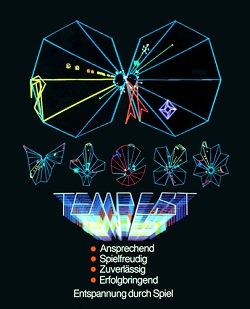
“The game involves a series of progressive levels. So if you sucked at it, you could only get to the 2nd or 3rd level. Now for a quarter that was a drag because your 'play' wouldn't last very long. But if you could navigate the incoming shooting lights (in various forms along various vortices), you could get to level 11, or 12, or 13 and play for upwards of 30 minutes on just one coin. Well, Michael Grayson was the 'relative' Master at the time since he had gotten to levels 20, 21, 22, and beyond. I was merely a neophyte and I sucked. But my addiction became great so I started playing it at the arcade with one-pointed Zen attention, until finally I got to levels 33, 34, and beyond. It was absolutely stunning . . . how concentrated the mind could get in this interactive electronic display. I became one with the photonic geometric patterns weaving new mazes of intrigue. No joke. It was like a religion. Grayson, to his credit, likened it to the inner spiritual regions described in Sant Mat literature (see my book, The Enchanted Land--last chapter--for an illustration). Eventually, I got to higher and higher levels, even above 50, 60, and 70 (at these levels the objects are sometimes invisible and one has to shoot almost by intuition or a higher mathematics). But then I heard of someone who had broken all barriers. One who had figured out the geometric code, the algorithmic secret behind the Tempest template. He transcended to all levels and he did it by not moving. I am serious. He realized that there was a spot on the game where one was eternally safe, provided that they never moved even if it looked certain that they were going to be annihilated. I tried it and it worked but only temporarily. One had to be absolutely still on the geometric point. I got to higher levels but still I moved. The Zen Master of Tempest never moved. He was 13 years old. How does Tempest relate to my epiphany about teaching? The grading system that is employed in colleges throughout the United States is based upon the notion of a hierarchy. But the problem is that the hierarchy is no longer meaningful in a functional way. It serves, rather, as a leveling device for administering (or, more accurately, shoveling) people into various factory-like educational institutions. The A through F grading system is an administrative device, not an intellectual one since any genuine intellectual knows that such a grading criteria is at best silly and at worst manipulative. Genuine hierarchies of knowledge are about functionality and ability and these are best appraised by real, empirical considerations not by impotent and limp letters.” Watch any kid playing a video game and you will see their attention riveted to the electronic screen, even if what they are playing has a series of arcane rules and forces them to study different strategies. The future of education is in gaming and with the development of virtual reality headsets there are no limits to where this technology will take us. In 2016 two VR headsets were released: the Oculus Rift and the HTC Vive, both of which allow the user to experience expansive 360 spaces of hitherto unimagined virtual worlds. The potential of VR is (hype becalmed) almost limitless, particularly as it applies to interactive learning. A good example of this comes from an application called Body VR. As explained on their website, “It's time for education to change. Learning from textbooks is a thing of the past, step into an immersive environment tailored to the content you want to learn.” I tested it myself and felt as if I had entered a completely new world, encased as I was within the contours of a blood vessel. The whole experience opened up a new level of understanding how the heart works, how red blood cells operate, and how bacteria infections invade the human body. It was unlike anything I had learned from school and, most importantly, I learned without the pressure and stress of a usual educational environment. It is not difficult to image how the chat bots of today will morph into very intelligent A.I. assistants for almost any daily task. Already hundreds of thousands of dollars has been raised on Kickstarter for Vi the “first artificial intelligence personal trainer” where an athlete or anyone interested in physical fitness puts on a portable A.I. headset that monitors your athleticism, providing essential vital signs as well as constantly updated coaching advice intimately tailored to each individual. The new teacher of the future is driven by A.I. and the school of tomorrow doesn't have classrooms with chalkboards, but personalized intelligent assistants that adapt to the needs of each student where functionality replaces rote memorization and where informational gaming replaces one-off testing. 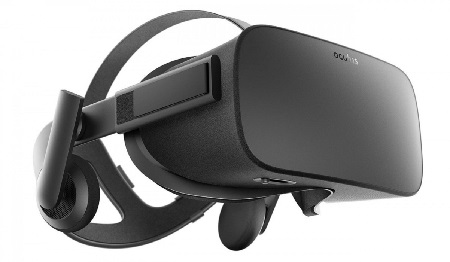 |
